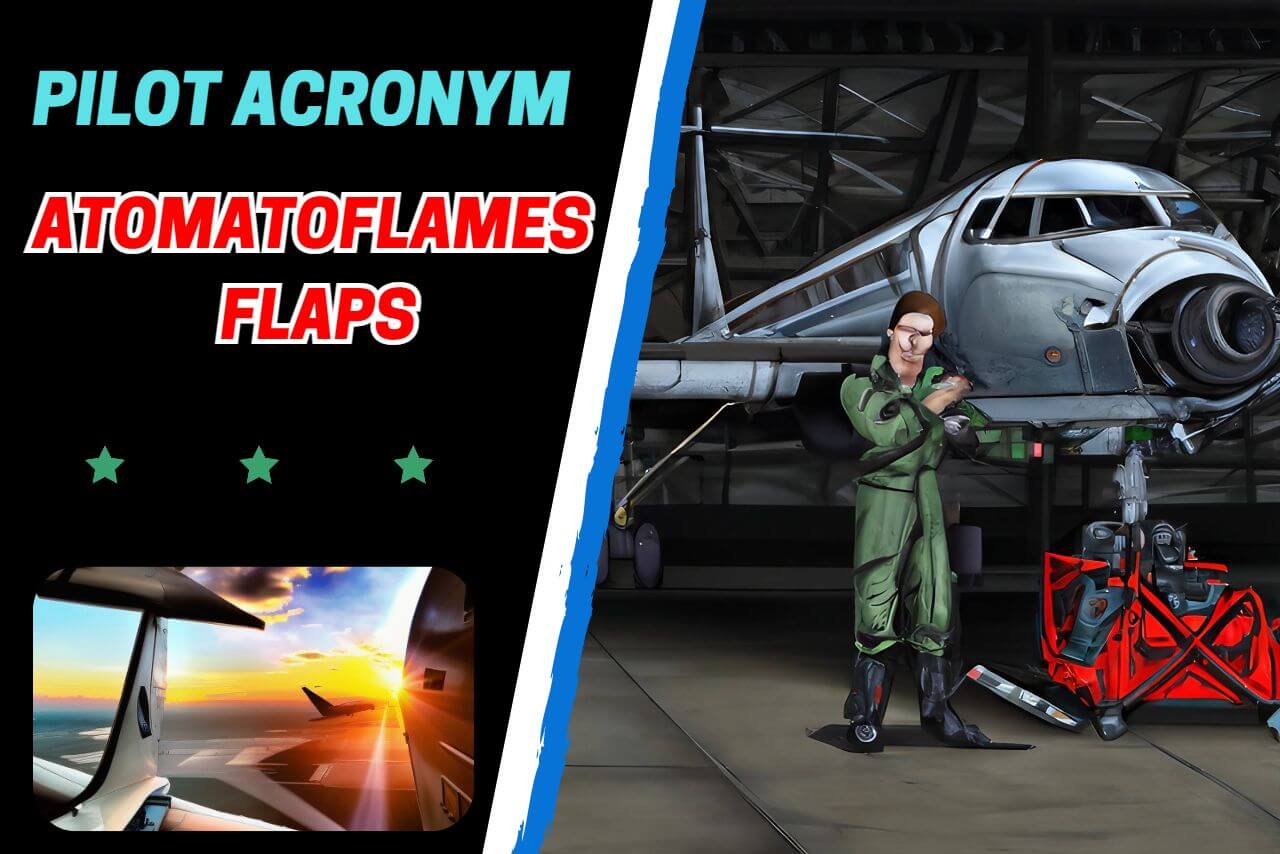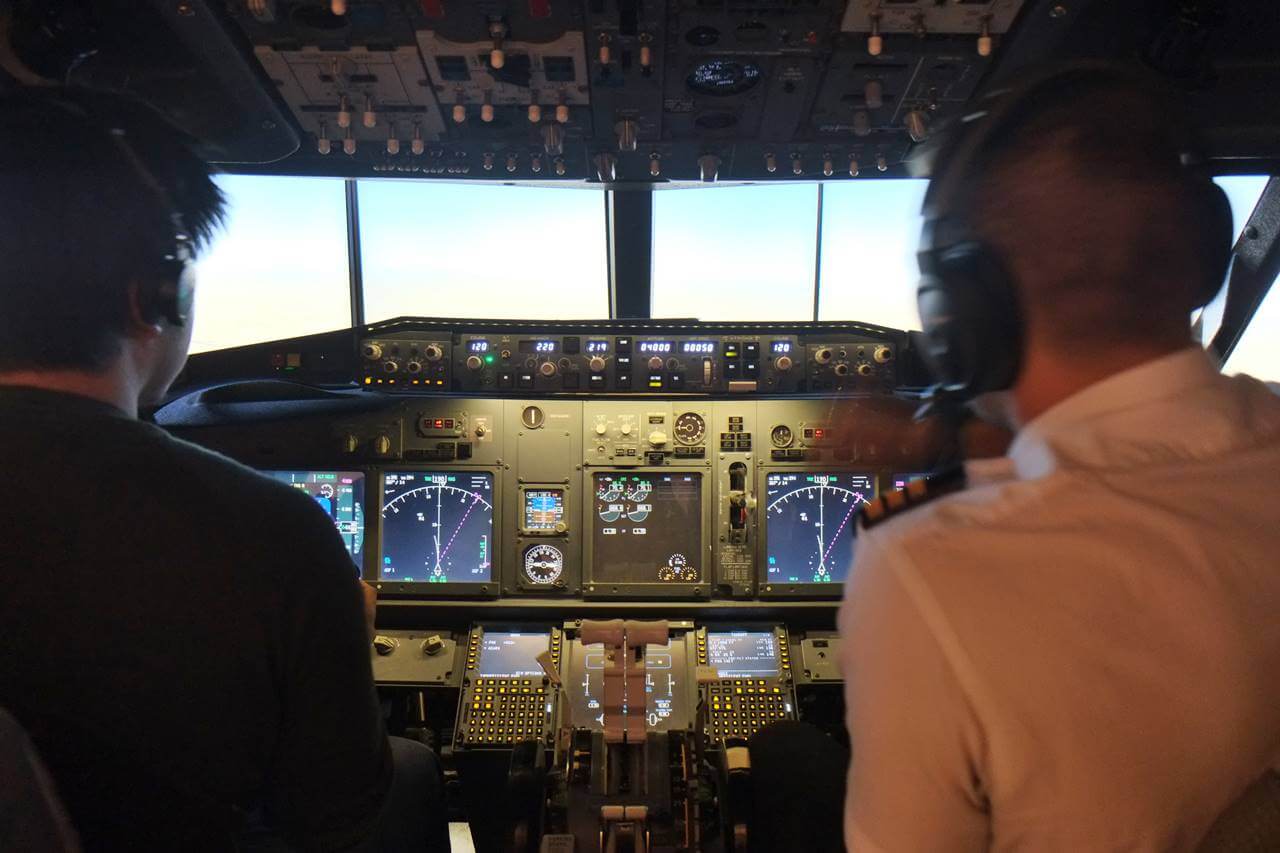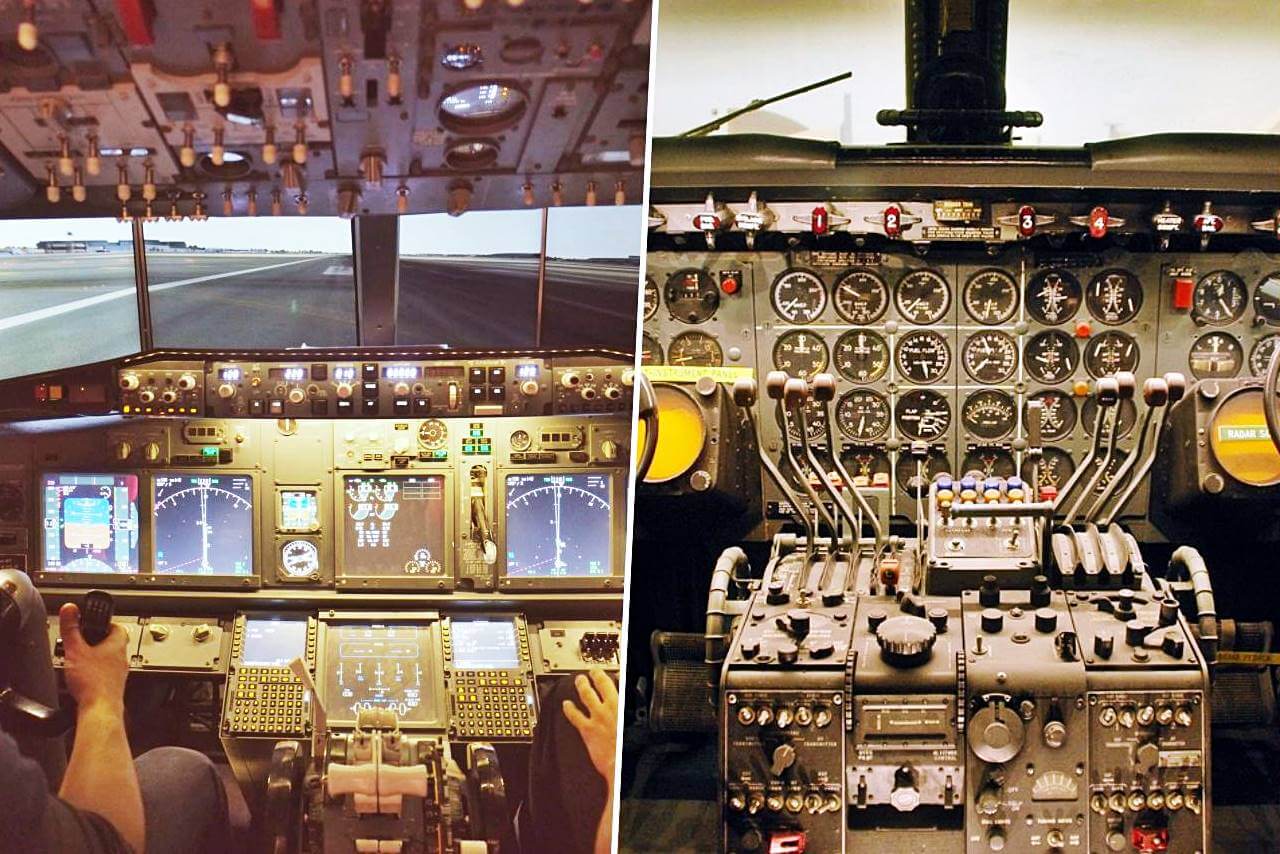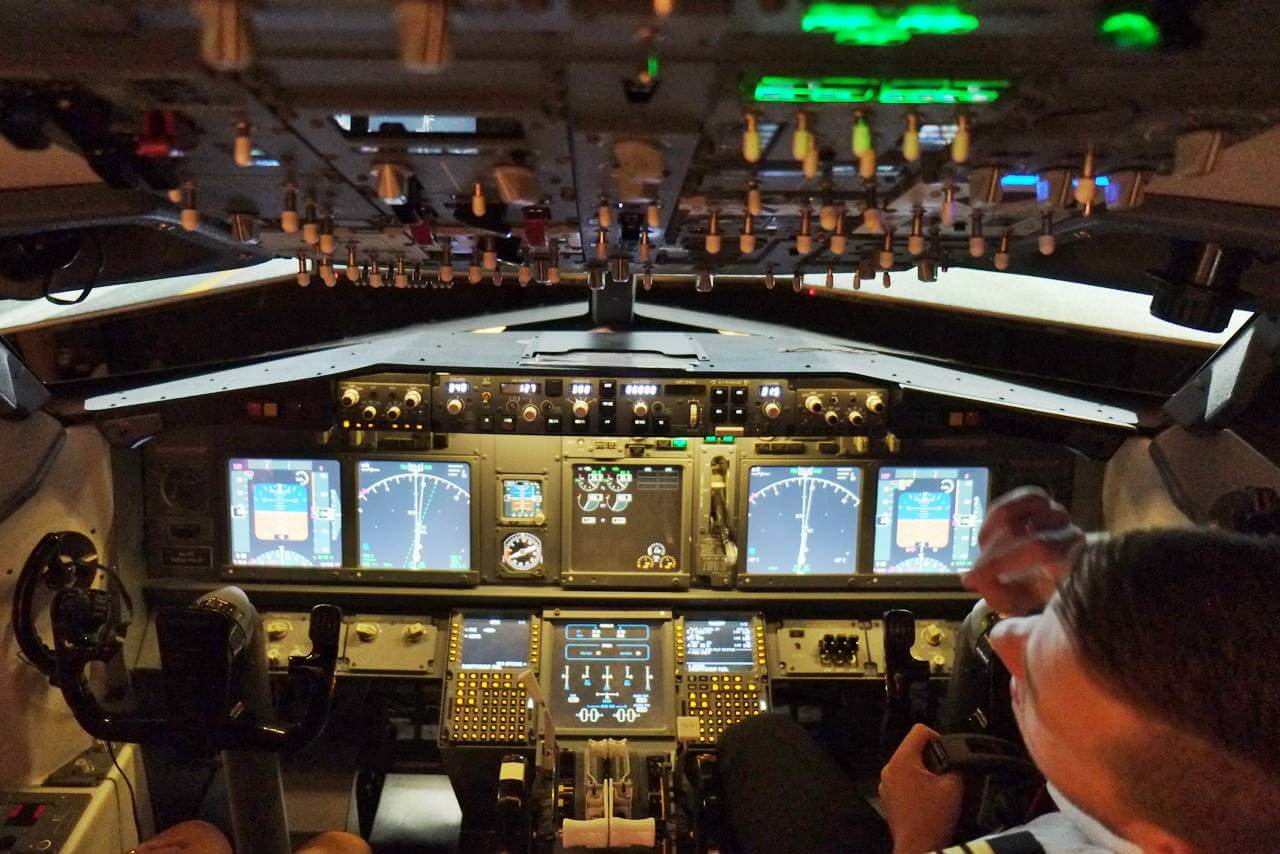Have you ever heard of the pilot acronyms such as “ATOMATOFLAMES” and FLAPS? These may sound like an apocalyptic fantasy or even part of a recipe for a BBQ sandwich, but in reality, it is actually a handy acronym or mnemonic (a pattern of letters) designed to help pilots remember the equipment requirements for VFR (Visual Flight Rules) Day and VFR Night flights.
According to the United States FAR (Federal Airline Regulations) 91.205, the rule states the minimum required equipment a pilot must have when operating an aircraft, and knowing how to use it is important in order to ensure that your operations are safe and legal.
ATOMATOFLAMES is used for VFR Day Flights. But this is also accompanied by another acronym called FLAPS, which lists the equipment required during VFR night flights.
It can be quite confusing if you’re trying to learn these terms for the first time, so let’s break down ATOMATOFLAMES and FLAPS into their individual components.
Contents
- ATOMATOFLAMES acronym for VFR Day Flights
- FLAPS acronym for VFR Night Flights
- Importance of ATOMATOFLAMES & FLAPS
- Location of ATOMATOFLAMES and FLAPS
- Difference between ATOMATOFLAMES and FLAPS
- What is FAR 91.205?
- Video: ATOMATOFLAMES FAR91.205 for Student Pilots
- Important Reminder: Know Your Acronyms!
- Frequently Asked Questions
- 1. What is the difference between ATOMATOFLAMES and FLAPS?
- 2. Where can I find information about these acronyms?
- 3. How important is it to know about the equipment requirements for VFR Day and Night flights?
- 4. What other regulations must be followed for IFR flights?
- 5. As a student pilot, am I required to memorize these terms?
- 6. What other acronyms should I be aware of?
- 7. Are all the equipment in ATOMATOFLAMES and FLAPS available in all types of aircraft?
- 8. Do ATOMATOFLAMES and FLAPS go hand in hand?
- Summary

ATOMATOFLAMES acronym for VFR Day Flights
- A – Airspeed indicator
- T – Tachometer
- O – Oil pressure gauge
- M – Manifold pressure gauge
- A – Altimeter
- T – Temperature gauge
- O – Oil temperature gauge
- F – Fuel gauges indicating the quantity of fuel in each tank
- L – Landing gear position indicator, if applicable
- A – Anti-collision lights
- M – Magnetic direction indicator or gyrocompass (optional)
- E – Emergency Locator Transmitter (ELT)
- S – Safety belt
FLAPS acronym for VFR Night Flights
- F – Fuses (spare fuses x 3)
- L – Landing light
- A – Anti-collision lights
- P – Position lights
- S – Source of power
It is important to remember that the equipment requirements may differ depending on where and when the aircraft will be operated. So, it is always best to consult the relevant regulations before flight operations.
Importance of ATOMATOFLAMES & FLAPS
It is crucial to be aware of the equipment requirements for VFR Day and Night flights, as without these pieces of equipment a pilot may not be able to safely operate an aircraft in compliance with regulations.
Aside from this, ATOMATOFLAMES and FLAPS provide a great reference for pilots who are unfamiliar with the equipment that needs to be installed on their aircraft before flying under visual flight rules. Knowing what type of equipment each acronym stands for can help you become a safer and more confident pilot.
Also Read: AV1ATES Acronym: Required Inspections for Aircraft Airworthiness

Location of ATOMATOFLAMES and FLAPS
The ATOMATOFLAMES and FLAPS acronyms can be found in the Federal Aviation Regulations (FAR) 91.205, which state the minimum required equipment a pilot must have when operating an aircraft. The regulations are available online, making it easy to reference them if needed.
ATOMATOFLAMES and FLAPS provide pilots with a handy reminder of the essential equipment requirements for VFR Day and Night flights respectively. Understanding what each acronym stands for is important as these pieces of equipment are necessary to ensure safe operations and compliance with regulations. Additionally, they can also help pilots become more familiar with the type of equipment that needs to be installed on their aircraft before flying under visual flight rules.
Also Read: IMSAFE Checklist Acronym: Pilot Fit to Fly Status Pre-Flight
Difference between ATOMATOFLAMES and FLAPS
ATOMATOFLAMES is an acronym that stands for the minimum equipment required during VFR Day flights, while FLAPS is an acronym representing the minimum equipment requirements during VFR Night flights. They have some similarities in terms of the types of equipment needed, but there are also differences in what is required.
For example, ATOMATOFLAMES requires a tachometer and temperature gauge while FLAPS requires fuses and a landing light. Additionally, there are other pieces of equipment that may be optional depending on the type and operation of the aircraft such as a magnetic direction indicator or gyrocompass (optional for ATOMATOFLAMES) and source of power (required for FLAPS).
These acronyms are designed to help pilots stay informed about necessary equipment when it comes to operating an aircraft safely and legally under US regulations. Following these guidelines can help ensure that all flights are conducted safely and without incident.

What is FAR 91.205?
The Federal Aviation Regulation (FAR) 91.205, otherwise known as 14 CFR 91.205, sets forth the necessary equipment for aircraft with standard category US airworthiness certificates. To be in compliance with FAR 91. 205(b), VFR day flights must meet specific requirements and those flying VFR at night need to adhere to the mandates set out in FAR 91. 205(c).
Similarly, IFR flight necessitates additional regulations listed under FAR 91. 205, which incorporates all of both previous parts’ requirements into one comprehensive list for ease of navigation for pilots and operators alike.
Video: ATOMATOFLAMES FAR91.205 for Student Pilots
Check out this video clip by Part Time Pilot on YouTube which features a detailed explanation of the ATOMATOFLAMES acronym and FAR91.205 for student pilots:
The video also covers practical tips on how to interpret the regulations, as well as what you need to know for your check-ride.
Important Reminder: Know Your Acronyms!
As a pilot, it’s very to be familiar with the equipment required for a safe flight. Knowing your acronyms such as ATOMATOFLAMES and FLAPS can help you identify what is needed in terms of equipment, and this is not only about being compliant with aviation laws but also about being safe while in the air.
Make sure to review the FAR 91.205 regulations before every flight and understand their implications so that you can plan accordingly and make a safe trip.
Frequently Asked Questions
1. What is the difference between ATOMATOFLAMES and FLAPS?
The ATOMATOFLAMES acronym represents the minimum equipment requirements for VFR Day flights, while the FLAPS acronym stands for the minimum equipment needed during VFR Night flights. ATOMATOFLAMES requires a tachometer and temperature gauge while FLAPS requires fuses and a landing light. Additionally, there are other pieces of equipment that may be optional depending on the type and operation of aircraft such as a magnetic direction indicator or gyrocompass (optional for ATOMATOFLAMES) and source of power (required for FLAPS).
2. Where can I find information about these acronyms?
The relevant regulations can be found in Federal Aviation Regulation (FAR) 91.205, which sets forth the required equipment a pilot must have when operating an aircraft. This regulation is available online for easy reference if needed.
3. How important is it to know about the equipment requirements for VFR Day and Night flights?
It is very important to be aware of all necessary equipment requirements in order to safely operate an aircraft in compliance with regulations. Knowing what type of equipment each acronym stands for can help you become a safer and more confident pilot.
4. What other regulations must be followed for IFR flights?
In addition to the requirements listed in FAR 91.205(b) and (c), pilots flying under IFR will need to adhere to any additional requirements set forth in FAR 91. 205 as well. This includes all of the previous parts’ equipment mandates and also incorporates new regulations specific to IFR operations. It is important to familiarize yourself with these regulations before engaging in any IFR flight.
5. As a student pilot, am I required to memorize these terms?
Yes, of course. As a student pilot, it is important to learn and understand the different acronyms used in aviation and their respective equipment requirements. This will help you become a more informed and responsible pilot. This is also a basic knowledge you should acquire since as a pilot, you are responsible for the plane.
6. What other acronyms should I be aware of?
Other common acronyms include VFR (visual flight rules) and IFR (instrument flight rules), which refer to regulations for different types of flights. Additionally, there are other aviation-specific acronyms such as ATC (air traffic control) and ADS-B (Automatic Dependent Surveillance–Broadcast). But these ar just some of the more frequently used acronyms, and there are many others that you should learn in order to understand the language used in aviation.
7. Are all the equipment in ATOMATOFLAMES and FLAPS available in all types of aircraft?
No. The type and operation of aircraft may vary, so some items may not be applicable to certain planes. For example, a tachometer or temperature gauge may not be necessary if the airplane is electric-powered, while additional equipment such as a source of power or magnetic direction indicator may be needed if the plane operates under IFR regulations.
8. Do ATOMATOFLAMES and FLAPS go hand in hand?
No. ATOMATOFLAMES and FLAPS are separate acronyms with different regulations and requirements. Although they both involve aircraft equipment, the acronym for VFR Day flights (ATOMATOFLAMES) does not necessarily have the same equipment requirements as those for VFR Night flights (FLAPS). However, it is wise to be prepared for both because as a pilot, while you may operate a day flight at times, it’s not impossible that you might have to switch to night flying sometime.

Summary
In conclusion, it is important for all pilots to understand the acronyms and regulations associated with flying. ATOMATOFLAMES and FLAPS are two of the most common acronyms used in aviation that refer to minimum equipment requirements for VFR Day and Night flights respectively.
It is necessary to know this information so you can plan accordingly and make a safe trip. So let this serve as a guide for all student pilots to learn and understand these acronyms as well as any additional regulations for specific flights.